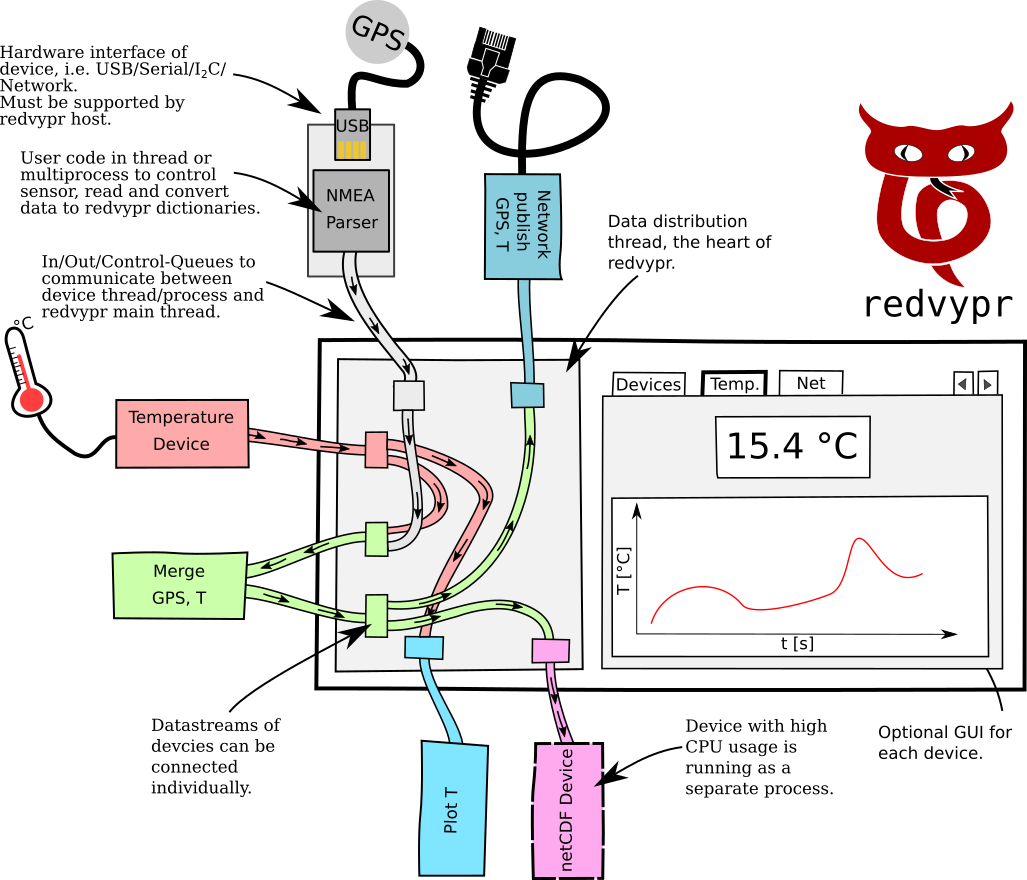Welcome to the homepage of redvypr
REaltime Data Viewer and PRocessor (in PYthon)
Redvypr offers a Python based framework to connect sensors and devices providing digital data and the possibilities to merge, process, redistribute and save the data. See figure below for an artistic overview of the general structure of redvypr:

Introduction
Sampling data from sensors does always require similar tasks:
- Reading data from sensors
- Saving the data
- Adding metainformation to the dataset, that typically includes information like time, location, experiment, responsible person(s), project ...
- Plotting data
- Do a dataanalysis
These tasks have been traditionally done by reading scales and documenting the data onto paper. By the still continuing digitalisation of sensors, the number of sensors and the amount of data output is increasing drastically. Digital sensors have an non overseeable amount of interfaces like UART, SPI, I2C, Ethernet, CAN, to name a few, and their own data format. Each sensor is typically shipped with its own software for sampling. The complexity starts if a user wants to fuse data from several sensors during sampling. An often used approach is to merge the data after the measurement. The users needs to read each dataset of each sensor, with the data containing most likely different data formats like time stamps, binary data or ASCII text. It is left to the user to synchronize the data and create a usable dataset.
Redvypr is a tool to help to work with digital sensors by providing a Python based infrastructure allowing to add sensors, interconnect sensors, process and save the data gathered by the sensors. Python is choosen as the language as it provides a rich infrastructure of packets to deal with digital data and its interfaces, i.e. using network devices, databases or serial connections. The extensive usage of queues, threads and multiprocesses allows to work with asynchronously received data from various sensors.
Please note that redvypr does not provide an interface to a specifc sensor, this needs to be coded by the user.
Redvypr was designed with the following goals in mind:
- Runs on small embedded systems
- Allows to work with asynchronously received data from multiple sensors
- Scalable by using several redvypr instances either on one computer or on a network
- Can be easily extended by users by the usage of modules to include a specific device/sensor
- Setup via a configuration file and an optional GUI
Documentation
Find here the documentation of redvypr.
